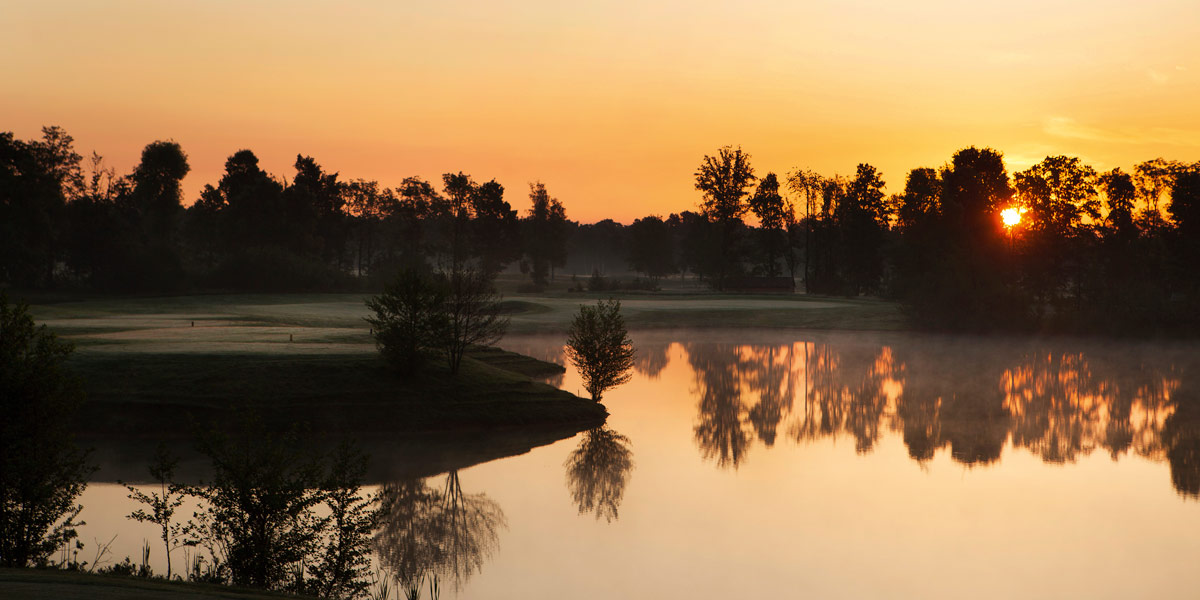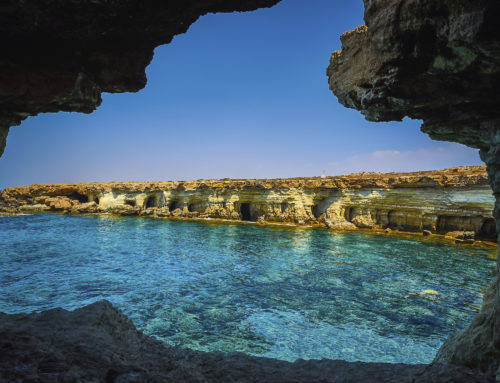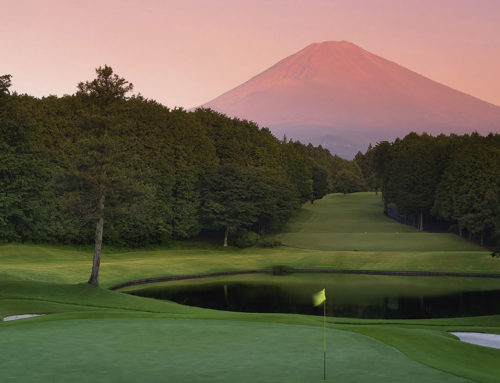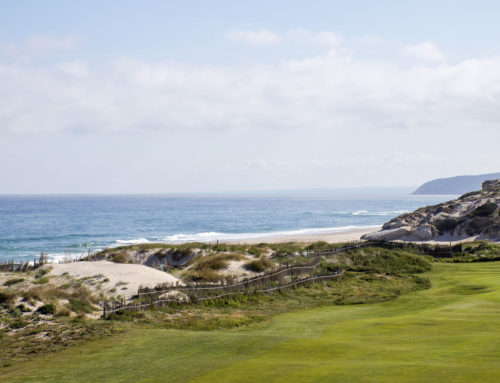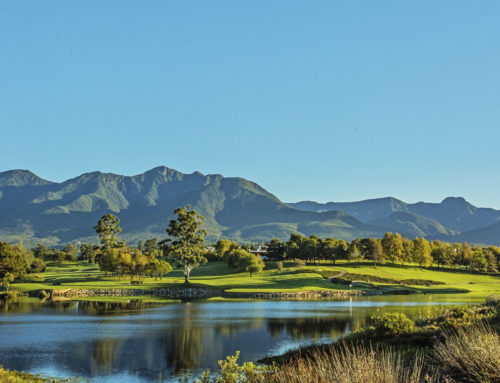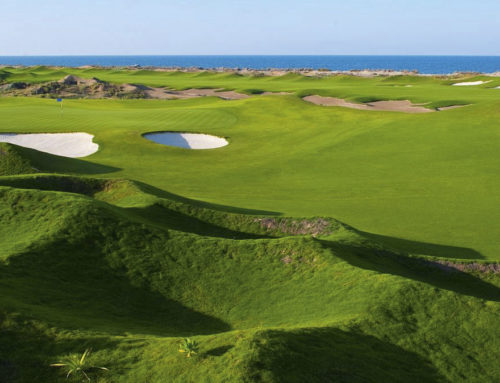Park Royal I Rovieri Golf Club, Turin
Italy’s golfing game is going up a notch after Rome was announced as the Ryder Cup host city for 2022 — only the second time the famous contest will have been played in continental Europe.
In October 2022, the Ryder Cup heads to the Marco Simone Golf and Country Club — 12.5 miles from the Colosseum in central Rome, just five years before the iconic tournament reaches its centenary in 2027. The choice of Italy as host, in preference to Germany and Spain — more obvious candidates, if only for their greater national commitment to golf — is a coup for a country that’s pledged to spend big to grow the game at home.
The original Ryder Cup, between professional golfers from Great Britain and America, was a British initiative. Samuel Ryder, the Lancastrian entrepreneur who made a fortune from selling seeds in penny packets, presented the American winners with the iconic gold trophy at the Worcester Country Club, Massachussetts. That Transatlantic victory was the first of too many. In an attempt to beef up the British team, the Irish were conscripted in 1953, but the Ryder Cup only really took off as a competitive tournament when the Europeans signed up in 1979. The hosting of the bi-annual tournament alternated between Great Britain and America until Seve Ballesteros secured Valderrama, in his native Spain, as the European venue in 1997.
After razzmatazz Celtic fixtures in Ireland, Wales and Scotland, the cup heads to Paris in 2018. The venue that’s to play host, Le Golf National, is a game changer: a state-owned former rubbish dump — not a mansion or an ancient oak in sight. Moving straight on to Rome four years later indicates a European Tour preference for a sophisticated capital with a large population and sightseeing potential to persuade golf tourists to extend their stays.
It’s highly unlikely the showcase venue in Europe’s most stylish country would have any truck with refuse disposal: the Marco Simone Gold and Country Club is set on a traditional estate with an 11th-century castle owned by fashion designer Laura Biagiotti. The course, created by American golf architect Jim Fazio in the 1980s, is being completely reconstructed by his equally talented son Tom for its Ryder Cup debut.
Italy’s weather, landscape and food are, at least, the equal of the Spanish Costas, the Balearic Islands and the French Riviera, but the nation stubbornly refuses to become golf mad. There are around 250 clubs with approximately 90,000 members. Doing the maths underlines obvious advantages: easy booking, minimal waiting, charming Italians eager to meet and greet. And the courses comprehensively cover the territory: wherever you are, there’s one nearby.
As in many parts of the world, the Brits are to blame. In 1889, ex-pats founded the Florence Golf Club, reinvented as Ugolino Golf Club in a posh, leafy Florentine suburb in 1933. It’s still Tuscan golf at its most Machiavellian, compensating for lack of length with teasing tactical demands. Tuscany also offers Arnold Palmer’s La Pavoniere Golf and Country Club and hilly Montecatini, both within easy reach of the city of Florence.
Rome joined the party in 1903: the Acquasanta Golf Club layout in the Amone River valley is the oldest in Italy. With spectacular views of a famous Roman aqueduct, it’s a wonderfully time-warped place to play. Don’t miss Golf Nazionale, designed by Jim Fazio for the Italian Federation and set in undulating parkland to the north west of the capital.
As Italy’s main industrial city, Milan has its share of the goodies. First up is Villa d’Este, set in pine, chestnut and birch forests in the Como Hills on Lake Montorfano. Regarded as a timeless classic, it’s been a hideaway for British, Belgium, Spanish and Greek royals since it opened in 1926. The Milano Golf Club is one of Italy’s smartest facilities and a regular host to the Italian Open. The opulent clubhouse replaced the original hunting lodge 60 years ago and the course is equally prestigious, with 27 holes, each well separated from the next in the expansive Parco di Monza. Expect total calm — except when the Formula One Grand Prix is in town.
In the ‘hidden gem’ department, look no further than Fruili-Venezia, the wine growing province around the Adriatic port of Trieste, near the Slovenian and Austrian borders. The courses in this lost corner offer golfers serious bragging rights, as few Brits have ever heard of them; as a bonus, they’re affordable and extremely welcoming. Plus, because they’re open all year, they have the advantage over snow-covered neighbours (Germans and Scandinavians, in particular, love to feed their habit in winter).
Following extensive refurbishment, Villaverde hosted its first European Senior Tour events in 2016 and 2017. Improvements include a two-tier driving range and a spaceship-like clubhouse. The layout unfolds over rolling hills outside the industrial town of Udine, with around 7,000 mature trees and lakes as the main hazards. The restaurant showcases delectable local produce like prosciutto crudo, balsamic vinegar, wines and chocolate.
Staying at the 17th-century Villa Policreti, a wine hotel next to the Castel d’Aviano course, is delightfully Italian. The area also offers invigorating golf among forests in the foothills at Tarvisio and splendid sea views at Trieste, the first course in the area set up by Allied troops at the end of the Second World War.
For sophisticates, Italy’s grandest golf break is Sardinia, the long, narrow island that pulls in toffs with yachts. The three classy courses are as far apart as the island permits. Pevero, on the northerly Costa Smeralda in chic Puerto Cervo, is the most dramatic. Like its neighbour, Sperone, across the straits in Corsica, it was designed by Robert Trent Jones Sr with due appreciation for the jagged coastline. Is Molas, near the capital, Cagliari, is well integrated into the rolling hinterland around the southern tip, while Robert von Hagge’s Is Arenas, halfway up the west coast, is a shoreline mix of dunes, forest scrub and natural water features.
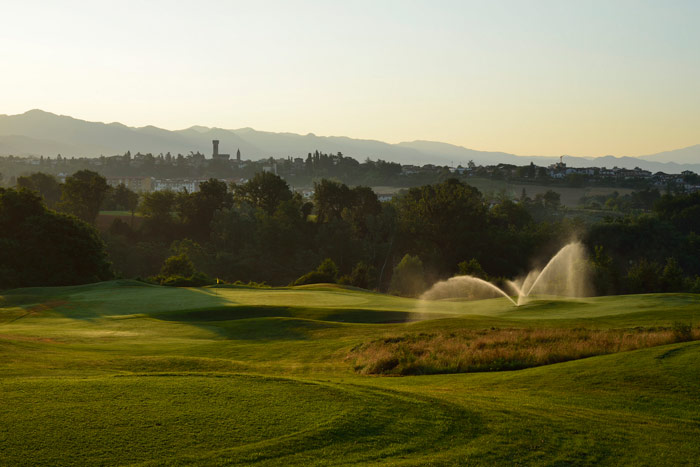
Poggio dei Medici Golf Club, Tuscany
WHERE TO PLAY GOLF IN ITALY
Park Royal I Rovieri Golf Club, Turin
Set in former royal hunting grounds in the Mandria National Park outside Turin, Robert Trent Jones Sr’s tough championship course is Italy’s jewel. Built by the Agnelli family, founders of Fiat and owners of Juventus, in 1972, it introduced American-style golfing elements — such as domed target greens guarded by bunkers — that dominate the world game today. No easy roll-up options here: only precision approach shots among a maze of ancient trees and snaggling streams result in an unblemished scorecard. A second course, Pramerica, is more open and easier, with epic Alpine views to the north. Gourmet food inside the clubhouse, cocktails at dusk on the most tranquil of terraces outside it: this is not an easy place to leave. Neighbouring Circolo Golf Torino is an historic alternative. Green fees range from £71-£107. royalparkgolf.it
Verdura Golf Resort and Spa, Sicilly
Hotelier Rocco Forte can often be found playing his two outstanding courses, boringly named East and West, but imaginatively designed by Kyle Phillips. Faced with a flat shore on Sicily’s south coast, the Californian maestro kept a natural look by using minimum landscaping to define the fairways. The more undulating East is considered superior, but both climax with dramatic holes along the beach. The resort is five star, but family friendly, with football, tennis, kayaking, sailing and windsurfing, plus a great fish restaurant on the shore. The Greek temples at Agrigento are an easy day trip and Donnafugata Golf Resort and Spa, southern Sicily’s second classy option, is a tempting add on. Green fees from £116. roccofortehotels.com
Palazzo Arzaga Hotel, Spa and Golf Resort, Lombardy
This great escape between Lake Garda and the Alps 30 minutes outside Verona is a connoisseur’s choice. The 15th-century hilltop manor house has been converted into a five-star hotel, with original frescoes and stone fireplaces still in place. Individually designed rooms and suites have antiques, marble bathrooms and quality art. The Moretto Restaurant is a treat. The extensive estate offers 27 holes: an 18-hole course designed by Jack Nicklaus’s son, Jack II, and a nine-holer by Gary Player. The Nicklaus layout is an all-American affair, with wide fairways, target greens and cavernous bunkers. The Player course is tighter and more technical. Green fees from £67-£87. palazzoarzaga.it

